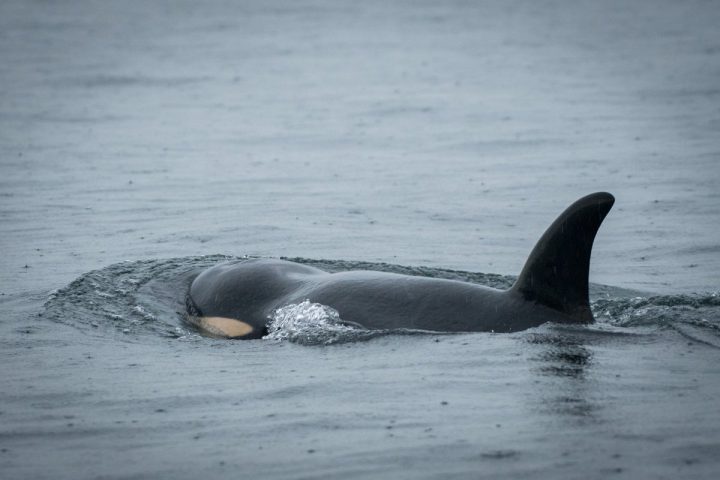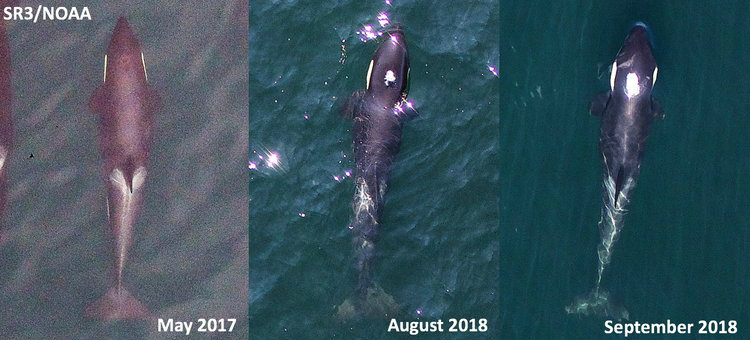

An image of J50 taken on Sept. 7 south of San Juan Island. Efforts to save the sick whale have not been successful. (NOAA/Twitter).
The National Oceanic and Atmospheric Administration in the U.S. said teams on the water and pilots are looking for J50, who has not been seen in several days.
According to the National Oceanic and Atmospheric Administration (NOAA), J50 has not been spotted with her pod, including her mother J16. The sick southern resident killer whale, also known as Scarlet, was last seen lagging a half mile to a mile (0.8 to 1.6 kilometres) behind her family group on Sept. 7 and her condition had not improved.
Officials were searching for the nearly four-year-old whale in the water yesterday. On Thursday, the NOAA expanded the search with Fisheries and Oceans Canada.
Pilots flying in and out of the San Juan Islands are also on the lookout. The West Coast Marine Mammal Stranding Network has been alerted.
The hotline to report a stranded animal in the U.S. is 1-866-767-6114. In B.C., individuals can call the BC Marine Mammal Response Network at 1-800-465-4336.
The latest aerial images of J50 show a “peanut head” appearance, which is caused by loss of fat behind the head. Last week, NOAA confirmed parasitic worms had been found in several fecal samples of the J-Pod whales with whom J50 shares fish, including with her mother. J50 has been in poor condition for months and there were concerns over the Labour Day long weekend when she was not seen with the rest of her pod in the waters between Victoria and Seattle.

Aerial images of Southern Resident killer whale juvenile J50, taken on May 31, 2017 (left), August 1st 2018 (center) and September 3rd 2018 (right) for comparison. In the 2018 photos, she is in poor body condition revealing a very thin profile, and loss of fat behind the head creating a “peanut head” appearance that has become more prominent over the last month. Images by Holly Fearnbach (SR3) and John Durban (NOAA) obtained with an unmanned drone, piloted non-invasively >100ft above the whales under NMFS research permit #19091.
She appeared again on Sept. 3 and was given an antibiotic dart by researchers. The NOAA said it is prepared to rescue J50 if she is separated from her pod or stranded. The plan would be to treat her before returning the animal to the wild.
Only 75 southern resident killer whales remain.




